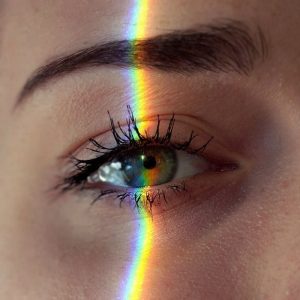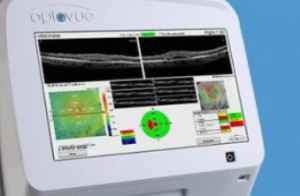Your eye doctor’s #1 goal is to look after your eye health, so you can enjoy the highest quality of life possible.
Vision is one of the most important assets we have for interacting with the world around us, so it’s vital to protect it.
Here are 10 signs that you should see an eye doctor:
1. Blurry vision
Blurry vision is a common sign of a vision problem, but could also be an indication of a serious eye condition.
If your vision is suddenly blurry, or more blurry than normal, it’s essential to see an eye doctor promptly to determine the cause.
While the solution might be as simple as an updated prescription, during a comprehensive eye exam your eye doctor will also check your eyes for glaucoma, macular degeneration, retinal disease and other serious eye conditions that can cause blurry vision.
2. Frequent headaches
Headaches are a normal part of life, as emotional and physical stress can cause headaches that range from a dull pain in and around the temples, to a sharp pain around or behind the eyes.
Persistent headaches can be a sign of eyestrain, glaucoma or infection.
Headaches can also signal problems with binocular vision, including amblyopia or convergence insufficiency.
3. Seeing double
Double vision can also be a sign of injury, stroke, tumor or illness. If your double vision is chronic or appears suddenly, contact your eye doctor immediately.
Double vision, or diplopia, can occur for a number of different reasons.
If it’s caused by astigmatism, keratoconus or dry eye, it can often be addressed with eyeglasses, contact lenses or dry eye treatments.
This can also occur as a result of your eyes being unable to coordinate properly. In this case your eye doctor may recommend vision therapy.
4. Trouble with night vision
Difficulties seeing at night can be one of the first markers of deteriorating vision.
While increasing difficulty seeing or while driving at night or in other low light settings is a natural part of aging, it can also be a sign of serious ocular health problems, such as a developing cataract or macular degeneration.
An eye doctor will be able to assess the underlying cause of your “night blindness” and prescribe proper treatment.
SEE RELATED: The Importance of Pupil Exams
If you experience any of the 10 signs listed on this page, contact your local eye doctor.
5. Eye pain
Any kind of pain in or around the eyes is abnormal, and can be a sign of a serious problem.
Conditions such as acute angle-closure glaucoma or ocular tumors can cause a great deal of pain in the eye, and result in blindness in only a matter of days.
Other, more common, reasons for eye pain include irritation due to allergies or a foreign object in the eye, an infection such as pink eye, dry eye syndrome or a scratch or sunburn on the cornea.
6. Flashing lights or large floaters
Floaters are those tiny squiggles, circles or lines that you sometimes see floating in your field of vision. Although they appear to be in front of your eyes, they are actually the shadows cast by microscopic fibers in the vitreous fluid inside your eyes.
Seeing flashing lights or floaters occasionally is normal, and you will see them even more as you age.
However, if you see an unusually large number of flashing lights or floaters, you may have had a retinal tear or detachment.
7. Dry or gritty feeling in your eyes
If your eyes are feeling gritty, dry or itchy, you may be experiencing dry eye symptoms.
Dry eye symptoms are more prevalent in dry climates or polluted air. Women are more likely to experience dry eye symptoms than men, and certain medications and medical conditions can cause dry eye symptoms as well.
You may get temporary relief with artificial tears.
However, if dry eye symptoms persist for more than 1-2 days, you should book an exam with your eye doctor.
They will be able to diagnose what is causing your dry eyes and prescribe a comprehensive approach that treats the causes, not just the symptoms.
8. Watery eyes
Though it seems counterintuitive, eyes that won’t stop watering can also be a symptom of dry eye syndrome. If your eyes aren’t staying properly lubricated, they can begin to produce an excess of tears in an attempt to compensate.
Watery eyes can occur when your tears lack sufficient oil to prevent evaporation.
As with other dry eye symptoms, over-the-counter eye drops may be able to help temporarily but don’t treat the underlying condition.
If symptoms persist, you should consult your eye doctor.
9. Eye discomfort using digital screens
Computer vision syndrome is a growing problem. Many of us spend hours on end at work staring at a computer screen, only to return home and spend even more time on our phones, televisions and laptops.
Excessive use of screens can result in:
- Eye strain in adults
- Lower blink rate, causing dry eye symptoms
- Accelerated myopia progression in children
If symptoms are persistent, your eye doctor will be able to evaluate the issue and recommend ways to help.
10. Light sensitivity
It’s normal to experience some degree of light sensitivity (photophobia) as you transition from indoor lighting to the outdoor sunshine.
However, if your eyes are sensitive to light, this could be a sign of serious eye conditions such as corneal abrasion, cataracts or keratoconus.
These conditions need to be addressed by an optometrist.
LEARN MORE: Guide to Eye Exams
Schedule an appointment with an eye doctor near you if you experience any of these 10 signs – you may have a serious eye condition.
Consistent eye care is the best way to ensure that uncomfortable symptoms don’t become serious problems that impact your eye health.
If you experience any of the 10 signs listed on this page, contact your local eye doctor.









